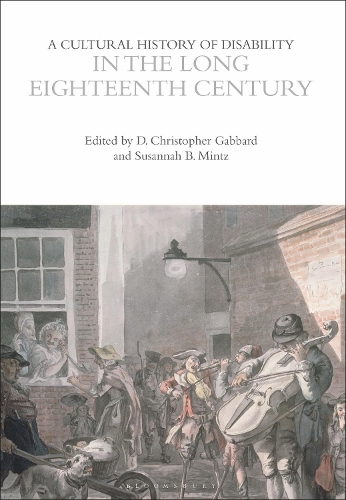
A Cultural History of Disability in the Long Eighteenth Century
(Paperback)
Available Formats
Publishing Details
A Cultural History of Disability in the Long Eighteenth Century
By (Author) Dr D. Christopher Gabbard
Edited by Susannah B. Mintz
Bloomsbury Publishing PLC
Bloomsbury Academic
16th May 2024
United Kingdom
Classifications
Tertiary Education
Non Fiction
Literary studies: c 1600 to c 1800
362.409033
Physical Properties
Paperback
200
Width 168mm, Height 244mm, Spine 10mm
380g
Description
Eighteenth-century philosopher Edmund Burke wrote, deformity is opposed, not to beauty, but to the complete, common form. If one of the legs of a man be found shorter than the other, the man is deformed; because there is something wanting to complete the whole idea we form of a man. During the long eighteenth century, new ideas from aesthetics and the emerging scientific disciplines of physics, biology and zoology contributed to changing fundamental notions about human form, function and ability. The interrelated concepts of the natural and the beautiful coalesced into a hegemonic ideology of form, one which defined communal standards regarding which aspects of human appearance and ability would be considered typical and socially acceptable and which would not. An essential resource for researchers, scholars and students of history, literature, culture and education, A Cultural History of Disability in the Long Eighteenth Century explores such themes and topics as: atypical bodies; mobility impairment; chronic pain and illness; blindness; deafness; speech; learning difficulties; and mental health.
Author Bio
D. Christopher Gabbard is Associate Professor of English at the University of North Florida, USA. He is the author of A Life Beyond Reason and serves on the editorial board of the Journal of Literary and Cultural Disability Studies. Susannah B. Mintz is Professor of English at Skidmore College in Saratoga Springs, NY. She is author of Unruly Bodies: Life Writing by Women with Disabilities, The Disabled Detective and is co-editor of a critical volume on the essayist Nancy Mairs.
